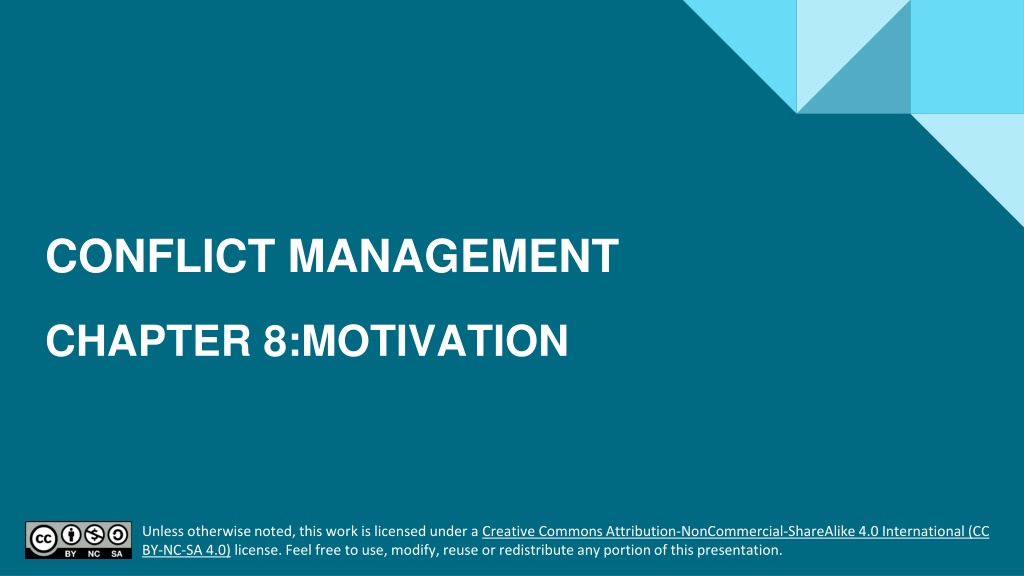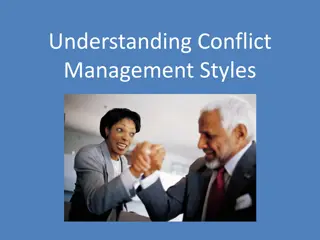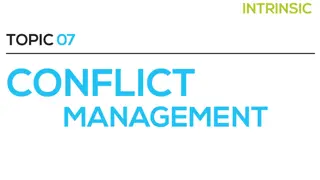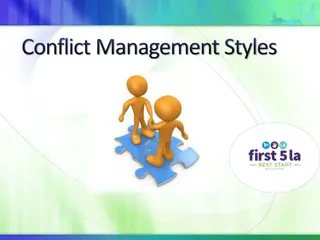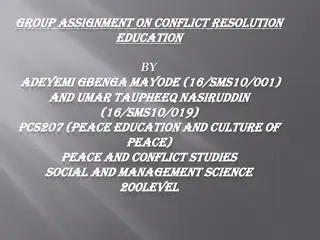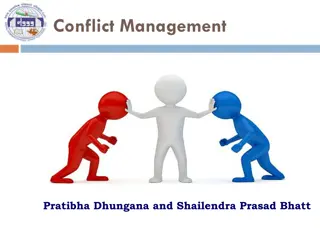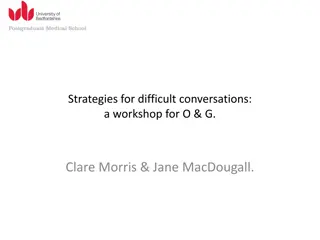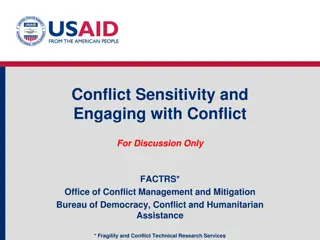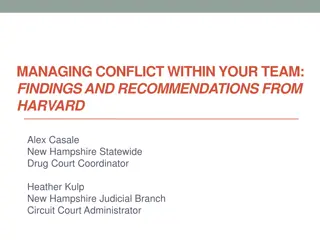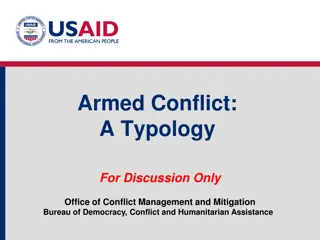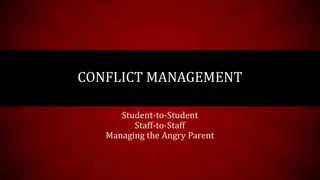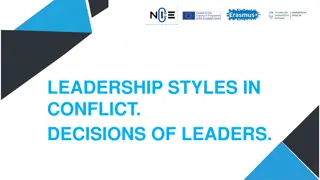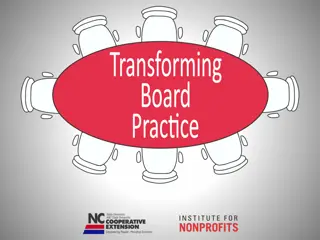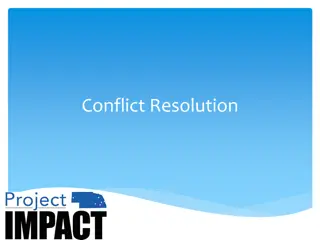CONFLICT MANAGEMENT
Motivation theories explore internal drives for goal achievement, highlighting strategies like job design and empowerment to fulfill esteem needs. Understanding equity theory in workplace dynamics is essential for resolving conflicts effectively.
Download Presentation

Please find below an Image/Link to download the presentation.
The content on the website is provided AS IS for your information and personal use only. It may not be sold, licensed, or shared on other websites without obtaining consent from the author.If you encounter any issues during the download, it is possible that the publisher has removed the file from their server.
You are allowed to download the files provided on this website for personal or commercial use, subject to the condition that they are used lawfully. All files are the property of their respective owners.
The content on the website is provided AS IS for your information and personal use only. It may not be sold, licensed, or shared on other websites without obtaining consent from the author.
E N D
Presentation Transcript
CONFLICT MANAGEMENT CHAPTER 8:MOTIVATION Unless otherwise noted, this work is licensed under a Creative Commons Attribution-NonCommercial-ShareAlike 4.0 International (CC BY-NC-SA 4.0) license. Feel free to use, modify, reuse or redistribute any portion of this presentation.
Learning Outcomes Upon successful completion of this chapter, you will be able to: Define motivation. Identify the relationship between needs, equity and conflict at work. Recognize how strategies like job enrichment, job enlargement and employee empowerment can help fulfil esteem needs. Review principles of communication climate. Explore types of confirming and disconfirming messages. Describe characteristics of supportive and defensive communication climates. Explain styles of communication on the passive-assertive-aggressive continuum. Compare using I and You statements. List steps in the assertion process. Analyze how framing and reframing can help assert needs and boundaries. Review goals in conflict and the SCARF model.
8.1 THEORIES OF MOTIVATION I Motivation refers to an internally generated drive to achieve a goal or follow a particular course of action. Highly motivated employees focus their efforts on achieving specific goals.
8.1 THEORIES OF MOTIVATION II Hierarchy of Needs Theory Image by Pamplin College of Business and Virginia Tech Libraries, Fundamentals of Business: Canadian Edition, CC BY-NC-SA 4.0. Color alerted from the original.
8.1 THEORIES OF MOTIVATION III Needs Theory and Conflict The idea of meeting these needs at work ties into many of the ideas discussed in previous chapters of this book. For example, I think that it s fair to say that most of us are not functioning at our best when our most basic human physiological needs are unmet. If you find yourself irritable and having difficulty controlling your emotions, it can be helpful to reflect on whether you are hungry, sick, or tired.
8.1 THEORIES OF MOTIVATION IV Meeting Esteem Needs through Job Design, Job Enlargement, and Empowerment One of the reasons for job dissatisfaction and conflict is the job itself. Ensuring our skills set and what we enjoy doing matches with the job is important. Some companies will use a change in job design, enlarge the job or empower employees to motivate them and help people to meet their esteem needs.
8.1 THEORIES OF MOTIVATION V Equity Theory Image by Pamplin College of Business and Virginia Tech Libraries, Fundamentals of Business: Canadian Edition, CC BY-NC-SA 4.0. Color alerted from the original.
8.2 MEETING NEEDS THROUGH COMMUNICATION CLIMATE I Needs and Communication Climate One way that we can help ensure that safety, social and esteem needs are being consistently met in the workplace is by creating a positive communication climate in which people feel seen, heard and valued. In this section, we will talk more about the nature of communication climate and how to generate messages that help others meet their needs.
8.2 MEETING NEEDS THROUGH COMMUNICATION CLIMATE II Principles of Communication Climate Communication climate is the overall feeling or emotional mood between people (Wood, 1999). If you dread going to visit your family during the holidays because of tension between you and your sister, or you look forward to dinner with a particular set of friends because they make you laugh, you are responding to the communication climate the overall mood that is created because of the people involved and the type of communication they bring to the interaction.
8.2 MEETING NEEDS THROUGH COMMUNICATION CLIMATE III Confirming and Disconfirming Messages Positive and negative climates can be understood by looking at confirming and disconfirming messages. We experience positive climates when we receive messages that demonstrate our value and worth from those with whom we have a relationship.
8.2 MEETING NEEDS THROUGH COMMUNICATION CLIMATE IV Types of Confirming Messages Recognition messages Acknowledgement messages Endorsement messages Image by Maricopa Community College, Exploring Relationship Dynamics, CC BY-NC-SA 4.0. Color altered from the original.
8.2 MEETING NEEDS THROUGH COMMUNICATION CLIMATE V Disconfirming Messages Unfortunately, sometimes when we are interacting with others, disconfirming messages are used. These messages imply, You don t exist. You are not valued. There are seven types of disconfirming messages: Impervious response Interrupting response Irrelevant responses Tangential response Impersonal response Ambiguous responses Incongruous responses
8.2 MEETING NEEDS THROUGH COMMUNICATION CLIMATE VI Supportive and Defensive Climates Communication is key to developing positive climates. This requires people to attend to the supportive and defensive communication behaviors taking place in their interpersonal relationships and groups. Defensive communication is defined as that communication behavior that occurs when an individual perceives threat or anticipates threat in the group.
8.3 ASSERTING YOUR NEEDS I The Passive-Assertive- Aggressive Continuum Image by Fanshawe College, CC BY-NC-SA 4.0.
8.3 ASSERTING YOUR NEEDS II Being Assertive I Statements One word that is often used for being assertive in our society today is to draw or hold our boundaries . I-statements allow you to directly express your thoughts, needs, feelings, and experiences to the people around you. I-statements allow us to take responsibilities for our experiences and places the power of our lives in our hands. I-statements look like this: I feel I think I experienced it like this I want I need
8.3 ASSERTING YOUR NEEDS III The Assertion Process Imagine you know it s time to draw a boundary with someone close to you, you ve thought long and hard about what is important to you, you know what you want to say, So what do you do now? Robert Bolton (1979), gives us a process to follow when delivering our assertion: Preparation Delivering the Message Silence Active Listening Recycle steps 2-4 (as necessary) Focus on a Solution
8.3 ASSERTING YOUR NEEDS IV Framing and Reframing Framing, in communication, is essentially the act of intentionally setting the stage for the conversation you want to have. In framing a conversation you express why you want to engage in this topic, what your intent is, and what you hope the outcome can be for resolving the conflict, as well as the impact/importance of your relationship.
8.3 ASSERTING YOUR NEEDS V Reframing Framing happens at the beginning of a conversation, Reframing happens when things get off track and you need to bring a conversation back on topic. Consider this picture: Image by Framing the Ocean, Ashley Orme Nichols, Making Conflict Suck Less: The Basics, CC BY- NC-SA 4.0.
8.4 UNDERSTANDING GOALS IN CONFLICT AND THE SCARF MODEL I Understanding Goals in Conflict Think back to our definition of conflict in Chapter 1 and the importance of real or perceived incompatible goals. McCorkle and Reese (2009) provide us with a very simple framework for analyzing what is happening with conflict in relation to goal incompatibility and interference. They identify four types of goals: substantive, process, relationship, and face goals. These goals are summarized in the table below.
8.4 UNDERSTANDING GOALS IN CONFLICT AND THE SCARF MODEL II The SCARF Model in Conflict The second framework we will examine, The SCARF model, comes from David Rock out the Neuroscience Leadership Institute (2008). Status Certainty Autonomy Relatedness Fairness
8.5 Key Takeaways Motivation describes a generated drive that propels people to achieve goals or pursue particular courses of action. Hierarchy-of-needs theory proposes that we re motivated by five unmet needs physiological, safety, social, esteem, and self-actualization and must satisfy lower-level needs before we seek to satisfy higher-level needs. Equity theory focuses on our perceptions of how fairly we re treated relative to others. This theory proposes that employees create rewards ratios that they compare to those of others and will be less motivated when they perceive an imbalance in treatment. Confirming messages include recognition, acknowledgement and endorsement. They all provide affirmation and help foster a positive communication climate. Disconfirming messages include impervious messages, interrupting, irrelevant, tangential, impersonal, ambiguous, and incongruous responses. Disconfirming messages provide the relational message that people are not respected or valued and contribute to a negative communication climate. Gibb provides six characteristics of supportive and defensive communication climates. Empathy is an important ability for our interpersonal relationships. It has three components: cognitive, affective, and compassionate. Communication styles can be described on a continuum from passive to assertive to aggressive. Using I statements, selective inattention and withdrawal are all strategies that we can use to assert our boundaries with others. There s six steps in the assertion process. We should try to assert boundaries when in person (compared to over other channels) and should avoid asserting when we are hungry, angry, alone or tired (HALT). An important part of asserting our needs includes framing the situation and if needed, refocusing the conversation using reframing. When our substantive, process, relationship or face goals are threatened or impeded, it can cause conflict. In the SCARF model of conflict, we can understand conflict in terms of our need for status, certainty, autonomy, relatedness and fairness.
